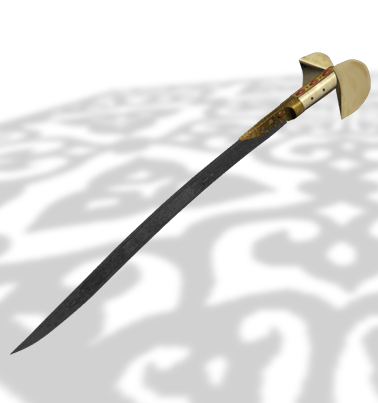


Yatagan As Ottoman empire was expanding, their conquests brought them to teritory of Bosnia and Herzegovina. With them, they brought their culture, religion, architecture and ofcourse ther weapons. Yatagan, one of the most famous ottoman swords, with its specific curved shape was famous among janissaries and other infrantry soldiers because they were smaller and lighter then other swords so as not to hinder them when carried at the waist on the march. It is named after the town of Yatagan in southwest Turkey which was conquered by a Seljuk commander and blacksmith named Osman Bey, whose cognomen was Yatagan Baba. Yatagan Baba later settled there, and gave his name not only to the town, but to the swords which were produced there. It consisted of a single-edged blade with a marked forward curve. The blade way usually inscribed. Sometimes inscriptions are verses from Kur'an or just the name of the owner or of the blacksmith that made it. Inscriptions were usually very detailed and nicely crafted, which shows great simbolic value of the sword. Other then being used in battle, civillians carried Yatagans decorated with precious gems and hilts made out of gold or silver as status simbols. Hilt, wich had an unusual shape, was made out of bone, ivory, horns or silver. That specific shape prevents the sword slipping out of the hand when used to cut. Model you are just looking at is kept in the Museum of Sarajevo. His hilt is made out of beef knee bone, and the part connecting blade with the hilt is decorated with semi-precious stones. |
Author: Vedad Šeta